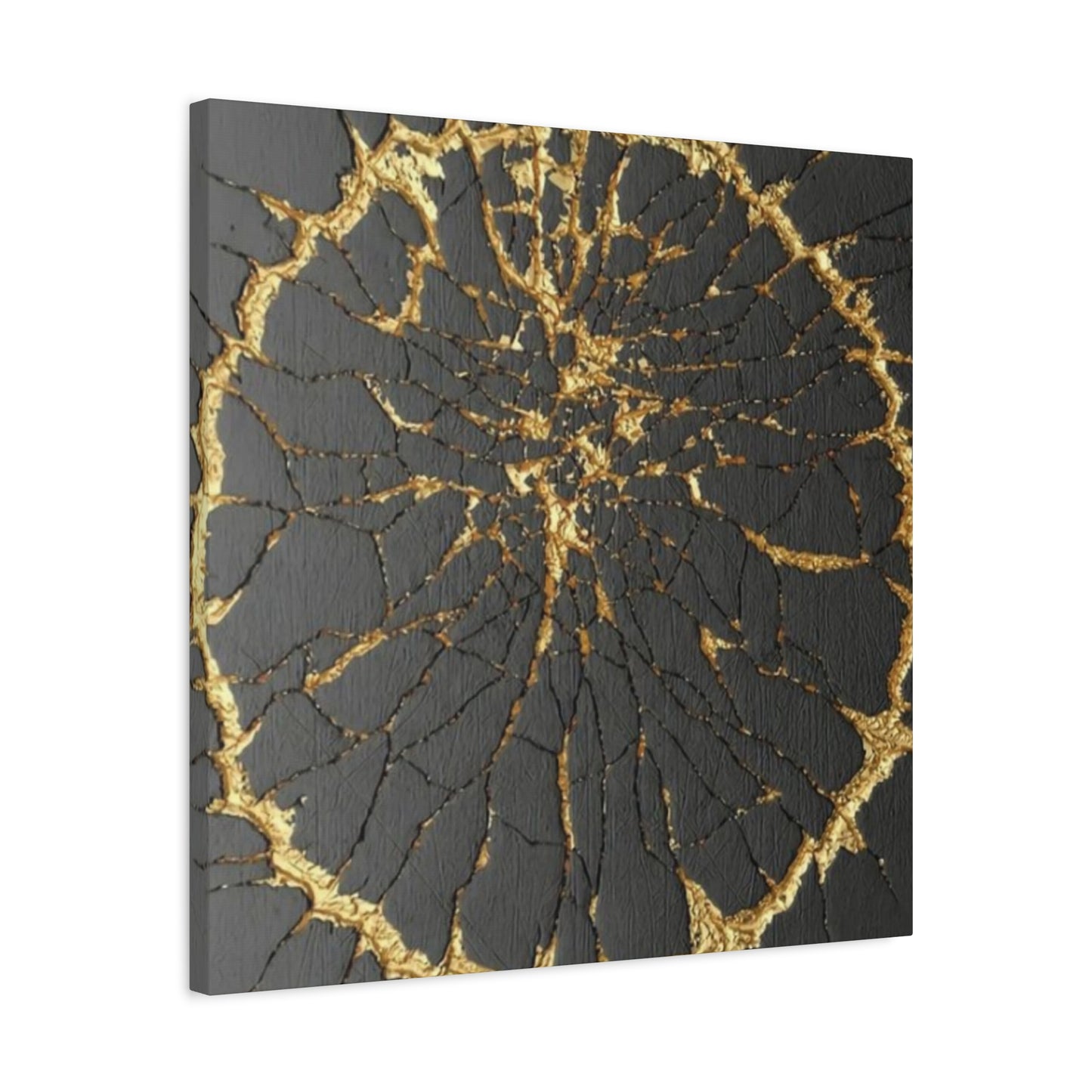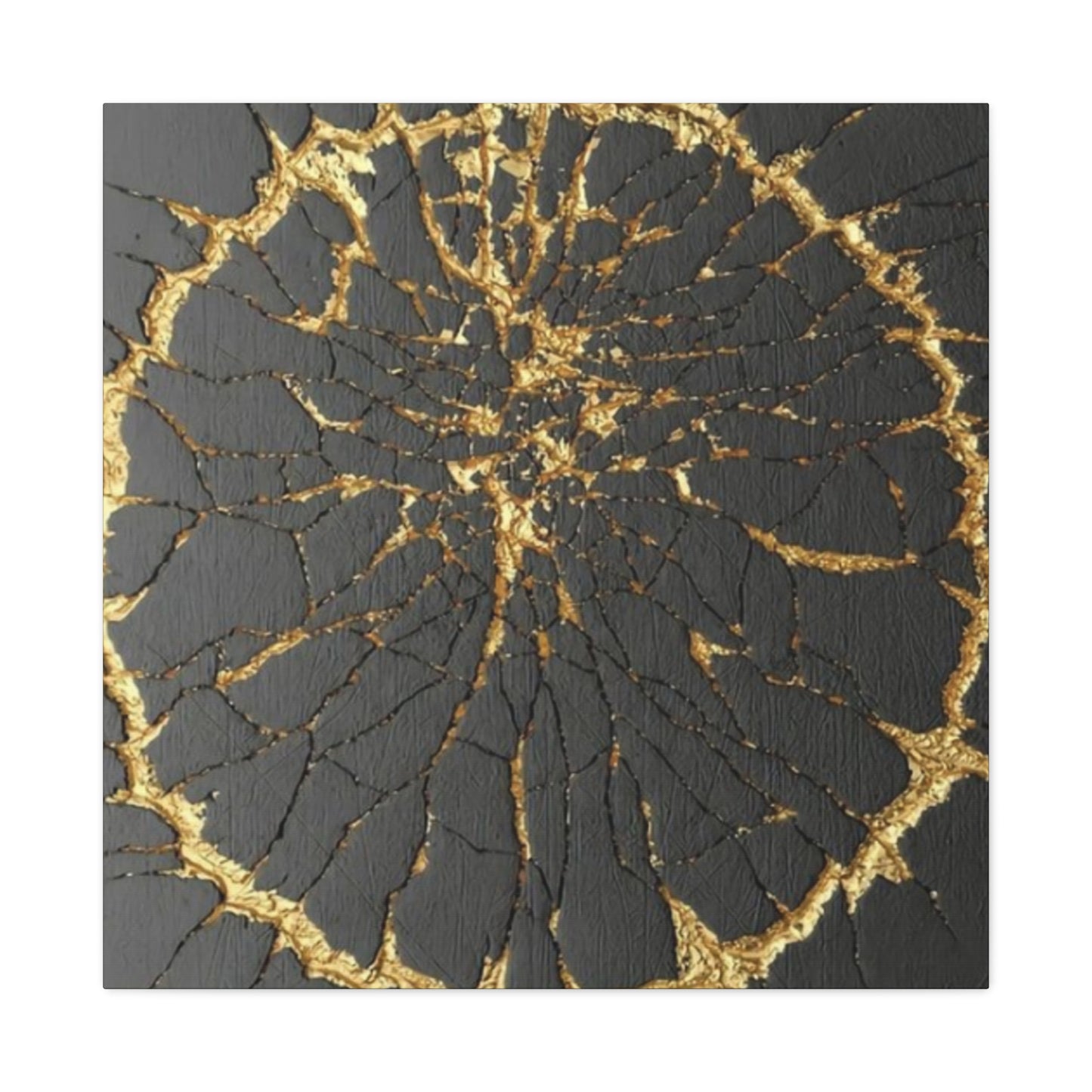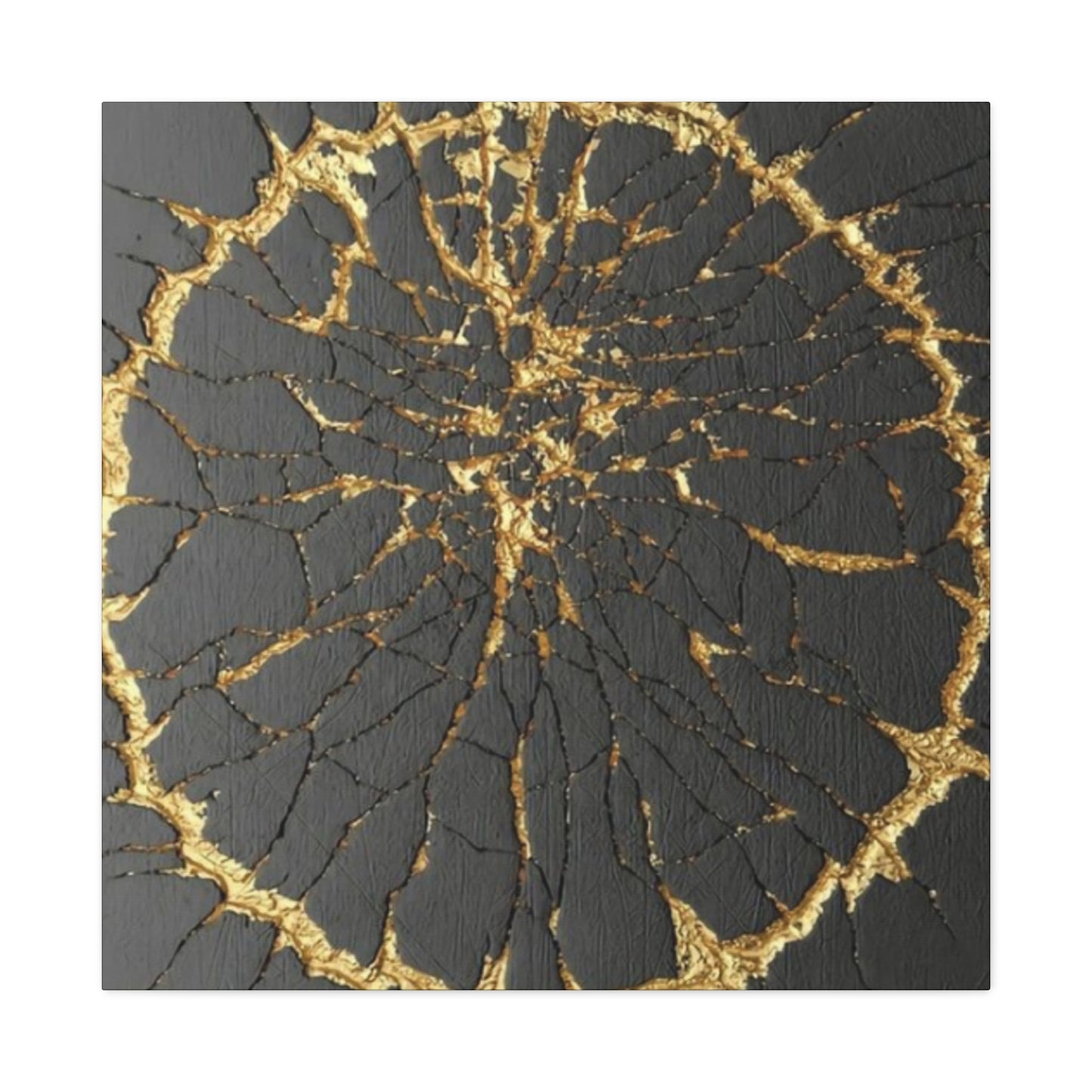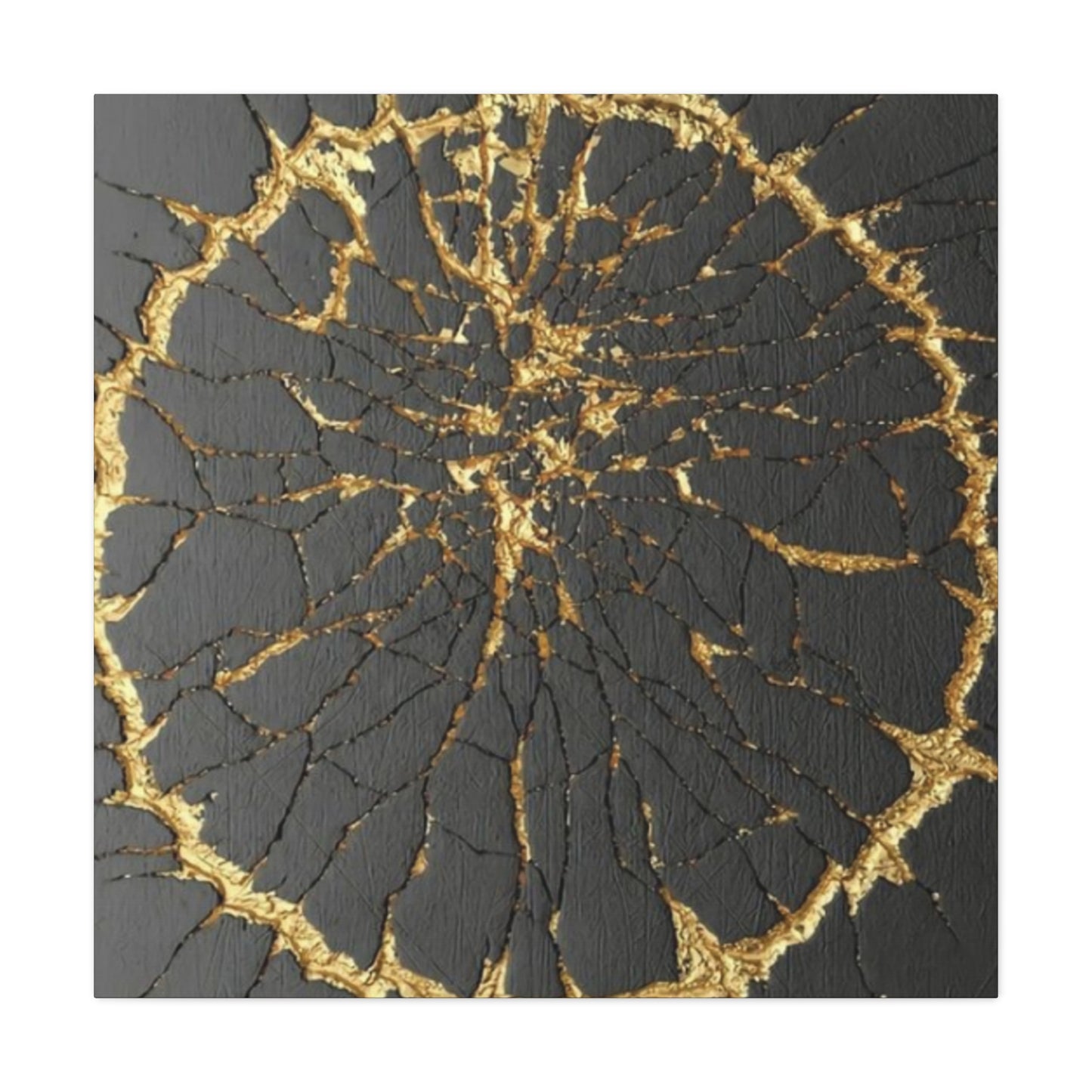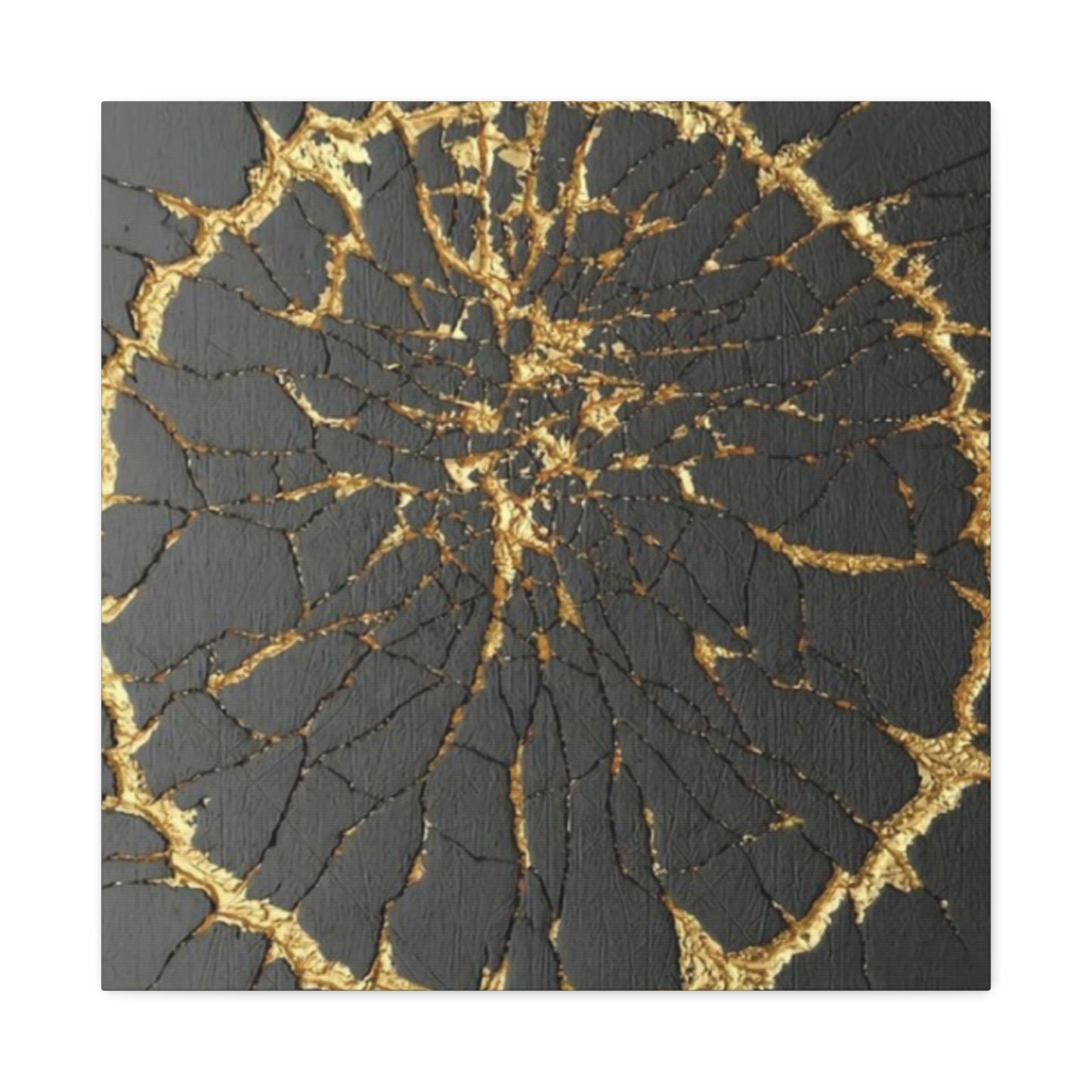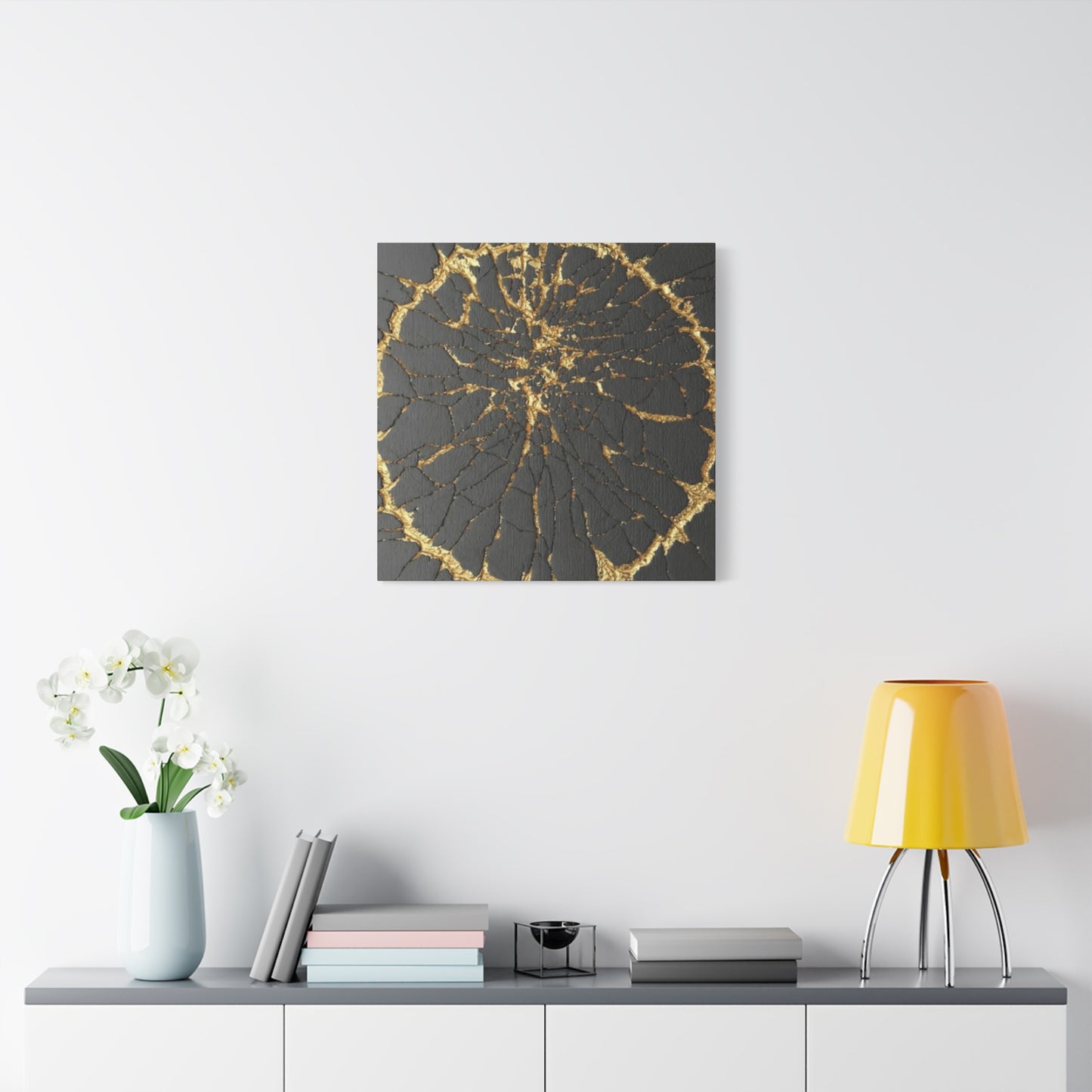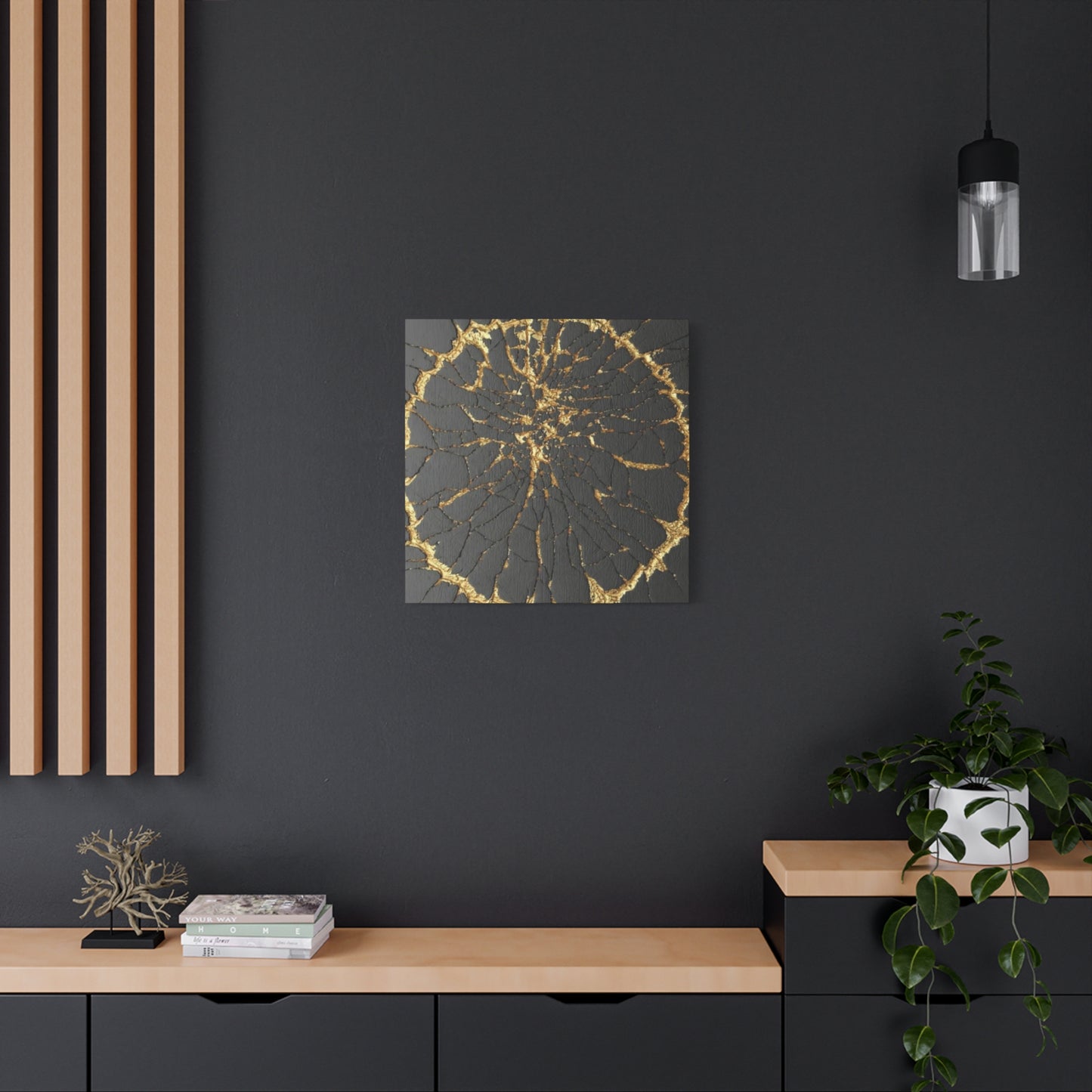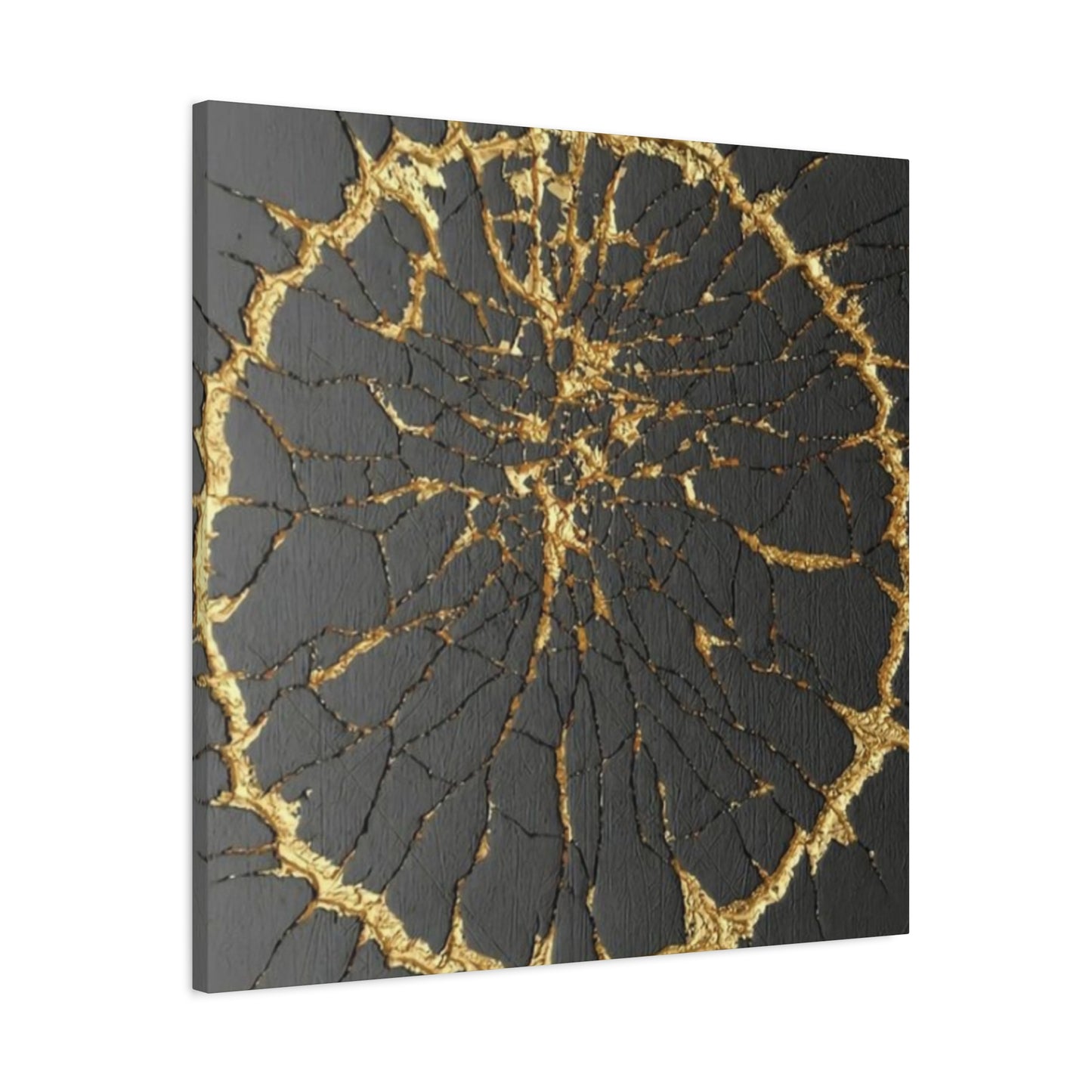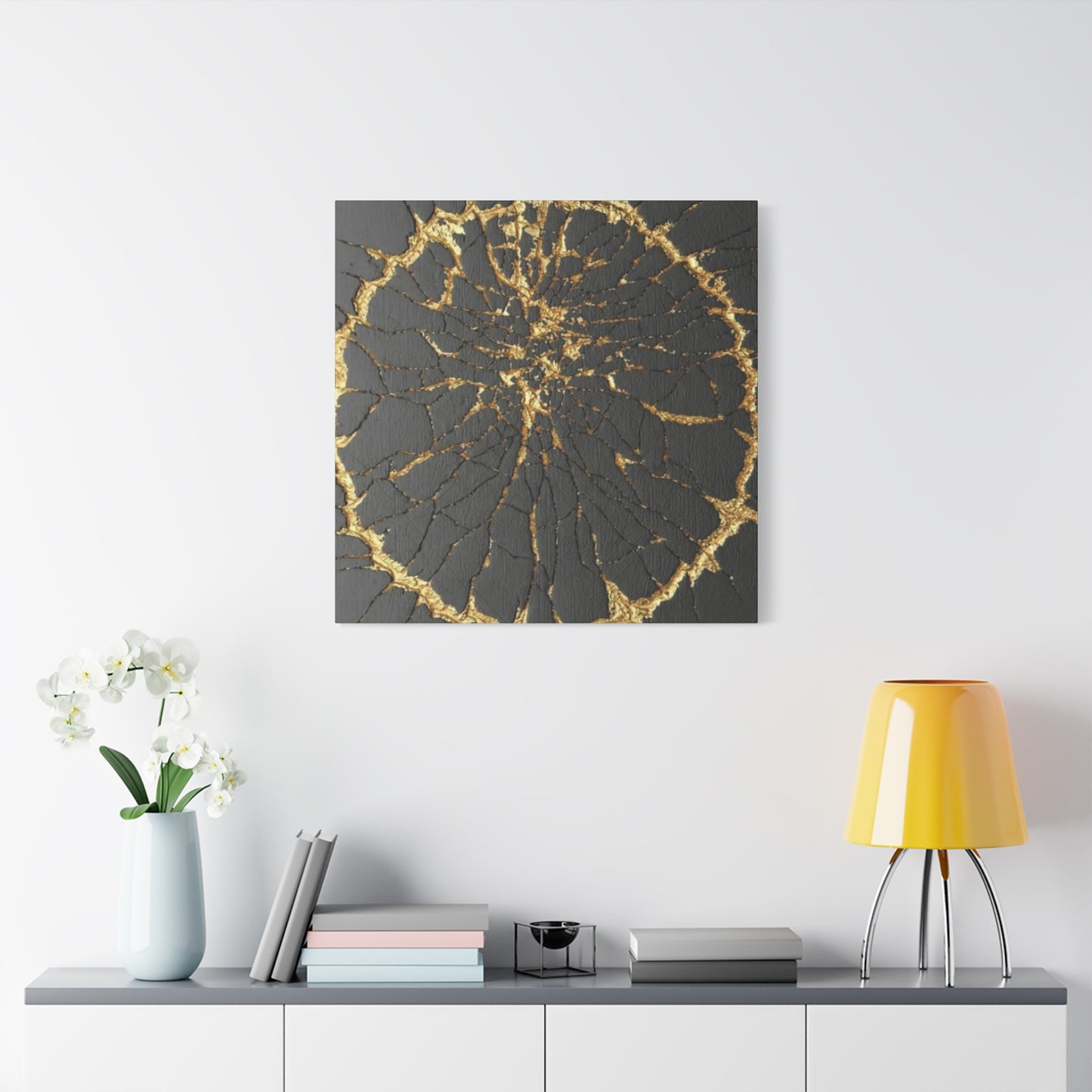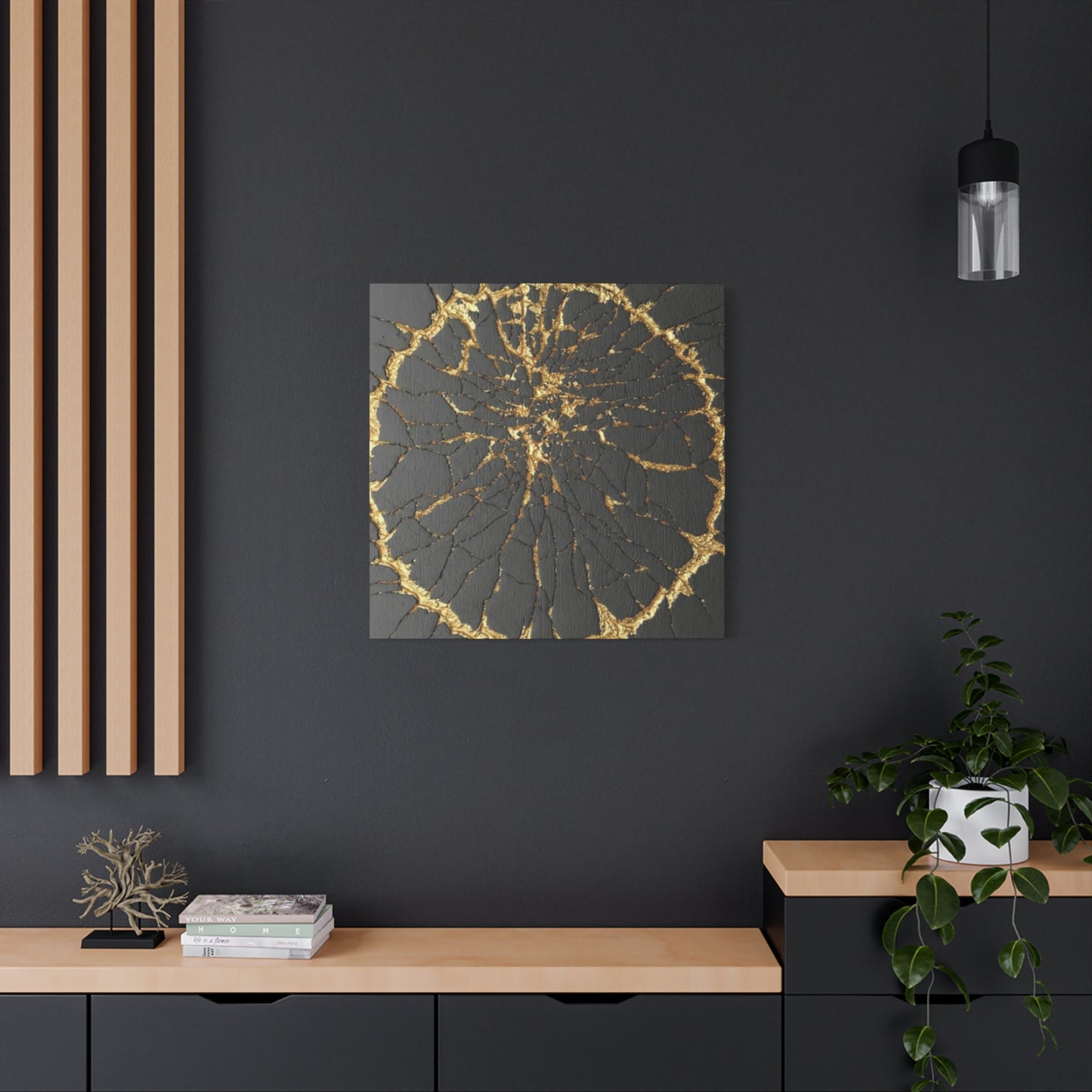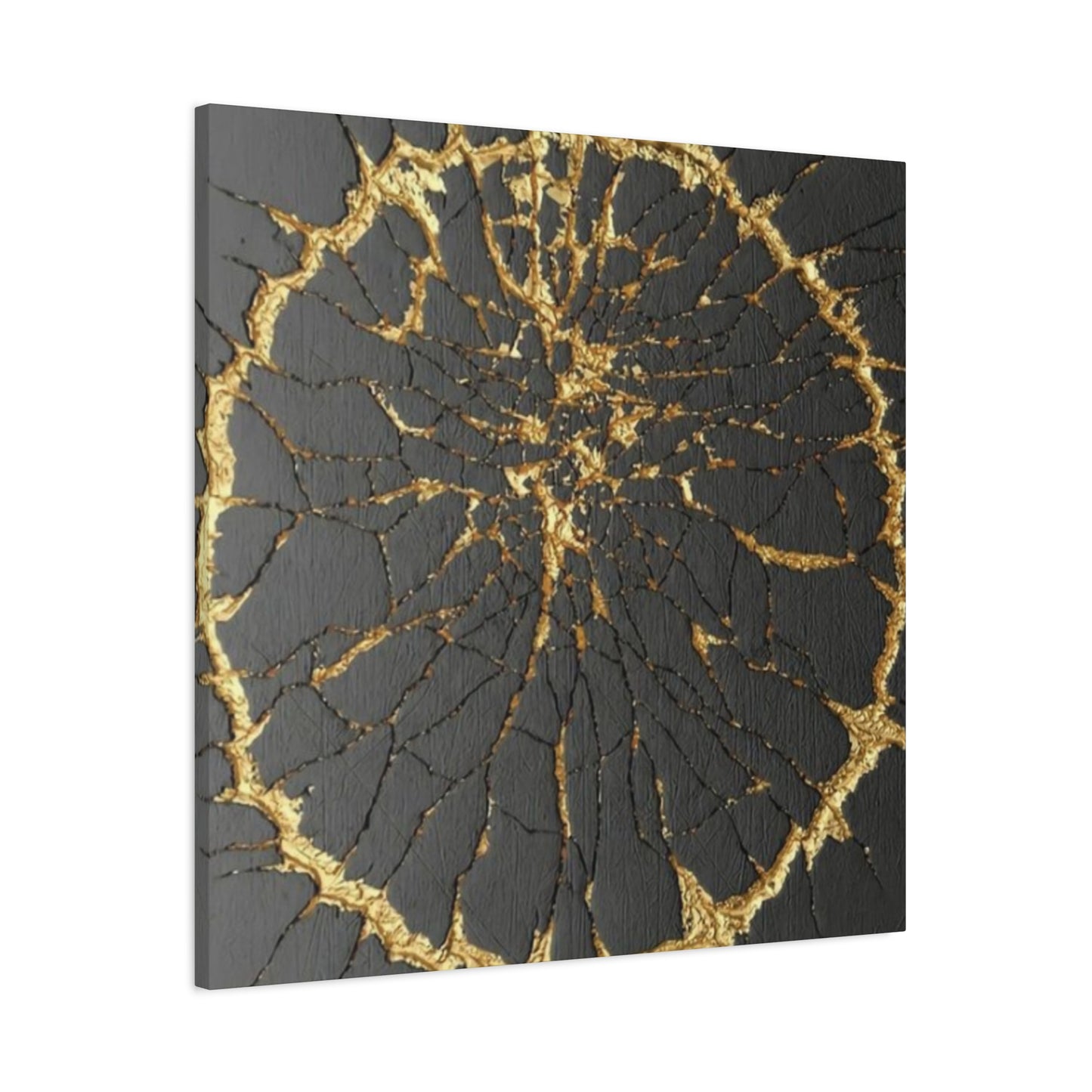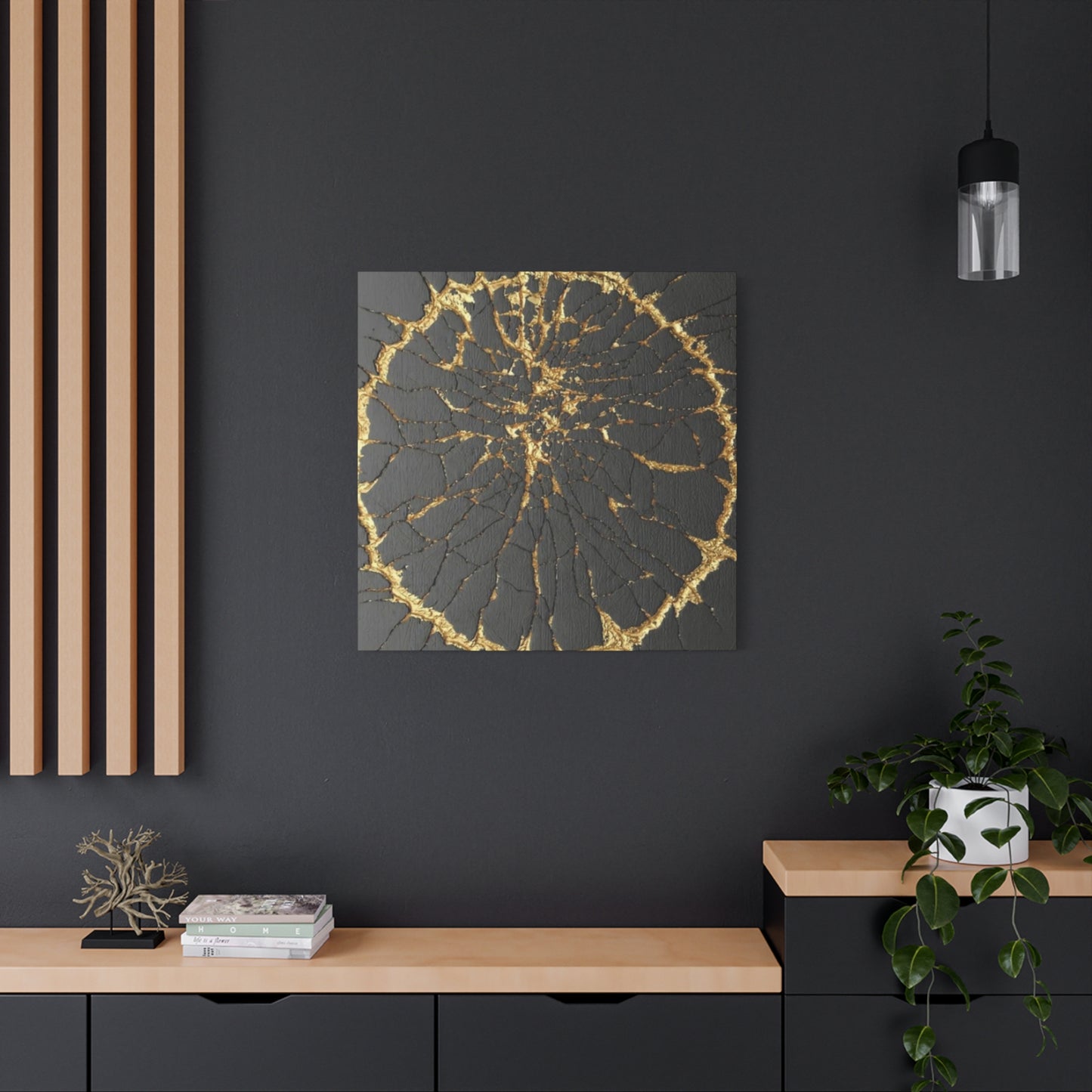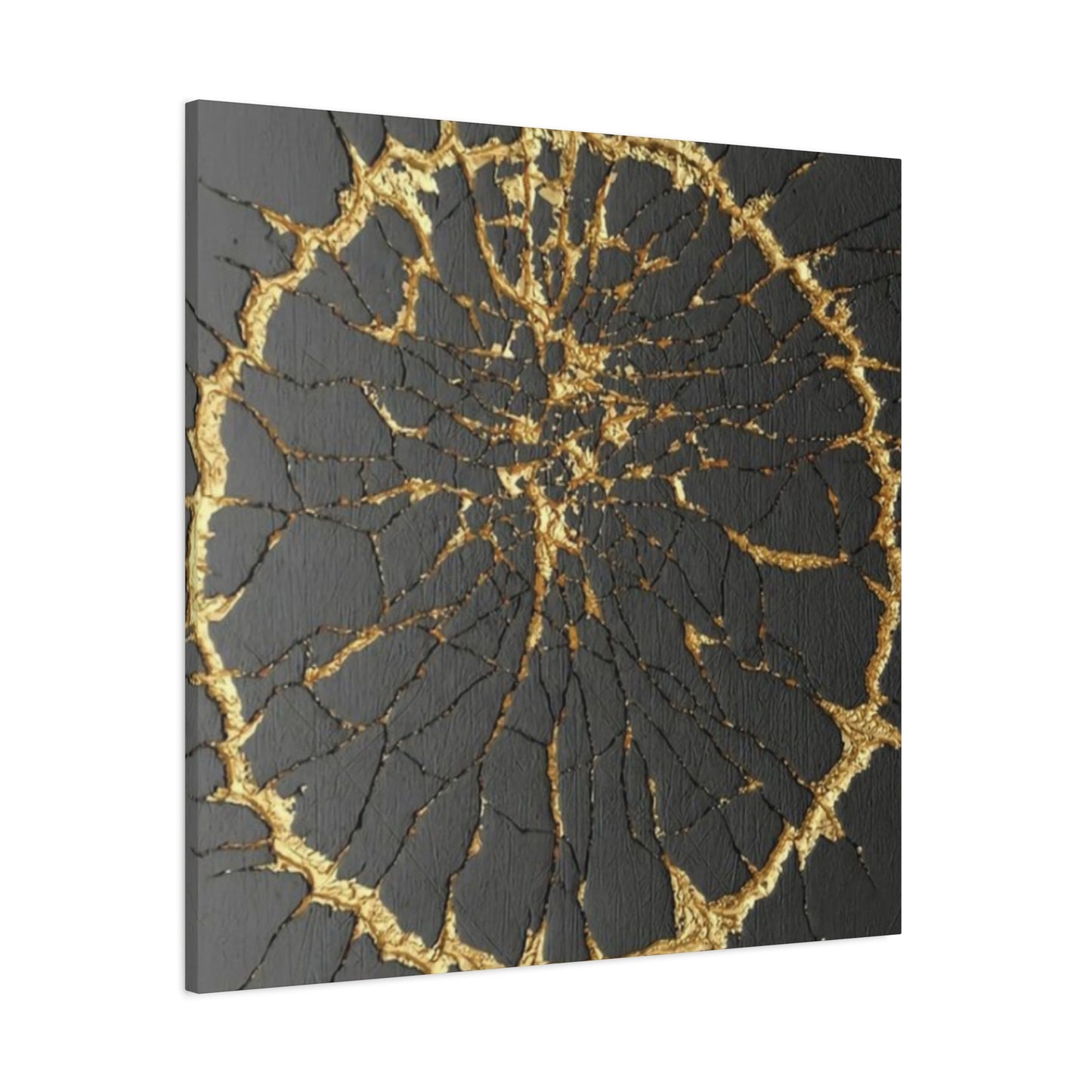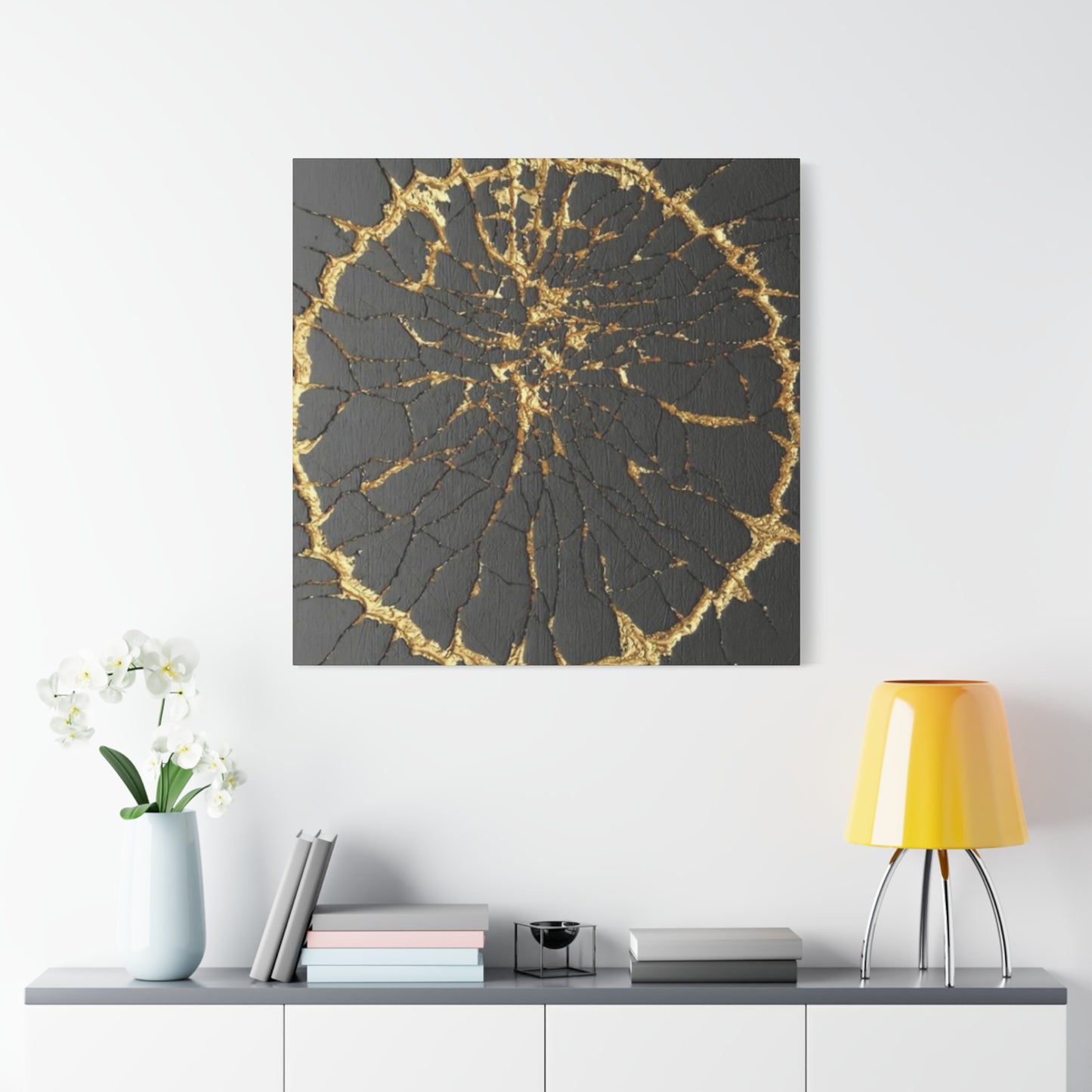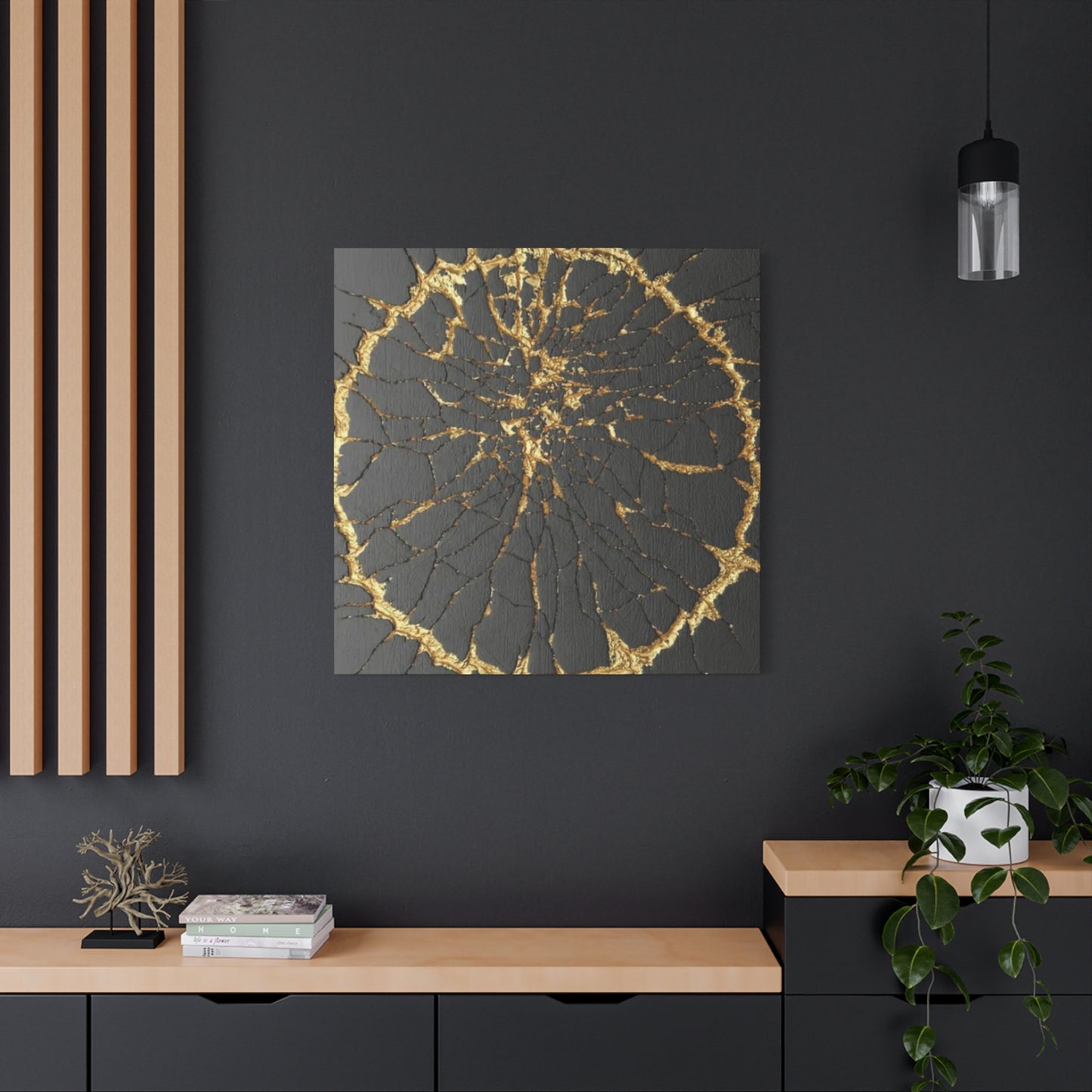Golden Circle Wall Art: Elevating Your Home with Timeless Geometric Beauty
Golden circle wall art represents one of the most sophisticated and versatile forms of contemporary home decoration. These stunning pieces combine the mathematical perfection of circular geometry with the luxurious appeal of metallic gold tones, creating artwork that transcends temporary trends while maintaining universal appeal. The enduring popularity of golden circular designs stems from their ability to complement virtually any decorative style, from ultra-modern minimalism to traditional elegance, making them an investment piece that grows with your evolving tastes.
The artistry behind golden circle wall art encompasses various techniques, materials, and artistic approaches that transform simple geometric forms into captivating focal points. Professional artists and craftspeople employ methods ranging from hand-applied gold leaf to modern digital printing on metallic substrates, each technique offering distinct visual characteristics and price points. Understanding these differences helps collectors and decorators make informed choices that align with their aesthetic preferences and budget considerations.
Contemporary golden circle wall art draws inspiration from diverse cultural traditions, including ancient symbols of perfection, celestial bodies, and modern abstract expressionism. This rich heritage gives these pieces depth beyond their immediate visual impact, allowing them to serve as conversation starters and sources of contemplation. The circular form itself carries profound symbolic meaning across cultures, representing concepts of unity, wholeness, and infinite possibility, making these artworks particularly meaningful additions to living environments.
Selecting the Perfect Golden Circle Artwork for Your Living Area
Choosing the right golden circle piece for your living room requires careful consideration of multiple factors that influence both aesthetic impact and long-term satisfaction. The primary consideration involves assessing your existing color palette and determining how golden tones will interact with your current furnishings, textiles, and architectural elements. Golden circle wall art works exceptionally well in rooms featuring neutral color schemes, where the metallic elements can serve as warming accents without competing with other bold colors.
Room size plays a crucial role in artwork selection, as golden circle pieces need adequate visual breathing room to achieve their intended impact. In smaller living areas, a single medium-sized circular piece can create dramatic focus without overwhelming the surroundings, while larger rooms may accommodate multiple coordinating pieces or one substantial statement artwork. The relationship between artwork size and room proportions should follow established design principles, with larger pieces requiring higher ceilings and more expansive wall areas to achieve visual balance.
Lighting conditions significantly affect how golden circle wall art appears throughout different times of day. Natural light brings out the reflective qualities of metallic elements, creating subtle variations in appearance as light angles change. Artificial lighting options, including track lighting, picture lights, and ambient illumination, can be strategically positioned to enhance the artwork's golden elements while minimizing unwanted glare or shadows that might detract from the piece's beauty.
The positioning of golden circle wall art within your living area should consider both visual impact and practical functionality. Above seating arrangements, these pieces create intimate focal points that draw attention upward, making ceilings appear higher while establishing cozy conversation areas. When positioned opposite windows, golden artworks can reflect natural light throughout the room, enhancing overall brightness and creating dynamic visual interest that changes with weather and seasonal light variations.
Personal taste preferences should ultimately guide selection decisions, as the most successful decorative choices reflect individual personality and lifestyle. Some collectors prefer bold, highly reflective golden finishes that make dramatic statements, while others gravitate toward subtle, matte golden tones that provide gentle warmth without overwhelming their surroundings. Understanding your own aesthetic preferences helps narrow down options from the vast array of available golden circle wall art styles and techniques.
How Gold Circular Artworks Enhance Contemporary Home Environments
How gold circular art adds warmth to modern interiors represents a fascinating intersection of traditional luxury materials and contemporary design principles. Modern homes often feature clean lines, neutral color palettes, and minimalist aesthetics that can sometimes feel stark or impersonal. Golden circle wall art introduces organic warmth through its curved geometry while adding luxurious metallic elements that elevate the sophistication level of any room without compromising the clean, uncluttered appearance that defines modern design.
The circular form itself provides essential visual relief from the predominantly rectangular and linear elements found in contemporary architecture and furniture design. Windows, doors, tables, sofas, and storage units typically feature straight edges and right angles, creating environments that can benefit from the softening influence of curved artistic elements. Golden circle wall art serves this purpose while simultaneously introducing precious metal tones that complement modern materials like stainless steel, glass, and polished concrete.
Temperature perception within rooms changes significantly when golden metallic elements are introduced through circular artwork. The warm undertones of gold counterbalance cool surfaces commonly found in modern homes, including large windows, tile flooring, and painted walls in trendy gray or white tones. This temperature balancing creates more comfortable, inviting environments where residents and guests feel naturally drawn to spend time and relax.
Contemporary lighting design works particularly well with golden circle wall art, as modern homes often feature sophisticated illumination systems that can be adjusted to highlight artistic elements at different times and occasions. LED strip lighting, adjustable track systems, and smart home integration allow homeowners to create custom lighting scenes that showcase their golden circle artwork while supporting various activities and moods throughout the day.
The reflective properties of golden metallic surfaces help distribute light more evenly throughout modern rooms, reducing harsh shadows and creating more balanced illumination. This effect is particularly valuable in open-concept homes where lighting needs to serve multiple functional areas simultaneously. Golden circle wall art positioned strategically can help bridge lighting between different zones while maintaining visual coherence across large, connected living areas.
Impact of Illumination on Golden Metallic Circular Designs
Effect of lighting on golden metallic circular artwork extends far beyond simple visibility, fundamentally transforming how these pieces interact with their environments throughout different times and conditions. Natural daylight reveals the full spectrum of golden tones, from pale champagne hues to deep bronze undertones, while evening artificial lighting creates entirely different moods and visual emphasis. Understanding these lighting interactions helps homeowners position and illuminate their golden circle wall art for maximum impact and enjoyment.
Morning light, with its cooler temperature and angular approach, tends to emphasize the more subtle golden tones while creating interesting shadow patterns around circular edges. As the day progresses and light becomes warmer and more direct, golden metallic surfaces begin to exhibit their full reflective potential, sometimes creating brilliant focal points that can be seen from multiple room angles. Late afternoon light, often considered the most flattering for golden tones, brings out rich, honeyed colors that add exceptional warmth to living environments.
Artificial lighting options each create distinct effects on golden circle wall art, allowing homeowners to customize their artwork's appearance for different occasions and moods. Warm white LED lighting enhances golden tones while maintaining color accuracy, making it ideal for everyday viewing and general room illumination. Cool white lighting creates interesting contrast effects, sometimes making golden elements appear more pronounced against their backgrounds, which can be dramatic for evening entertaining or special occasions.
Directional lighting techniques, including spotlights and picture lights, can transform golden circle wall art into dynamic focal points that change character as viewers move around the room. When lit from different angles, metallic circular surfaces reveal various textures and finishes that might not be apparent under general room lighting. This dimensional quality adds visual interest and encourages closer examination of artistic details and craftsmanship.
Dimming capabilities allow homeowners to adjust the intensity of light hitting their golden circle wall art, creating subtle variations in prominence and mood. Bright illumination showcases fine details and creates energetic, vibrant atmospheres suitable for active socializing, while dimmed lighting produces more intimate, contemplative environments where golden elements provide gentle warmth rather than dramatic focal points. This flexibility makes golden circle wall art particularly valuable for multipurpose living areas.
Coordinating Golden Circle Artworks with Minimalist Decorating Styles
Pairing golden circle prints with minimalist decor requires understanding how to introduce luxury elements without compromising the essential principles of minimalist design. The minimalist aesthetic emphasizes simplicity, functionality, and visual restraint, values that might initially seem incompatible with the richness of golden metallic artwork. However, when thoughtfully selected and positioned, golden circle wall art can enhance minimalist environments by providing carefully controlled luxury accents that respect the overall design philosophy.
The key to successful integration lies in treating golden circle artwork as architectural elements rather than decorative additions. In minimalist rooms, every element must serve a clear purpose and contribute to the overall design harmony. Golden circle pieces can fulfill this requirement by serving as focal points that organize visual attention while providing the warmth and human interest that purely functional minimalist environments sometimes lack.
Scale and proportion become particularly critical when introducing golden circle wall art into minimalist settings. Oversized pieces can overwhelm carefully balanced minimalist compositions, while undersized artwork may disappear against expansive neutral walls. The ideal approach involves selecting golden circle pieces that create purposeful visual anchors without competing with the architectural elements or functional furniture that form the foundation of minimalist design.
Color coordination in minimalist environments typically relies on neutral palettes with occasional accent colors. Golden circle wall art serves beautifully as these accent elements, providing controlled color introduction that complements rather than competes with the restrained palette. The warm undertones of gold work particularly well with the whites, grays, and earth tones commonly featured in minimalist decorating schemes.
Material quality becomes especially important in minimalist settings, where fewer decorative elements mean that each piece receives more focused attention. High-quality golden circle wall art with superior finishes, precise craftsmanship, and durable construction aligns with minimalist values of investing in fewer, better pieces rather than accumulating numerous decorative items. This approach ensures that golden circle artworks enhance the minimalist aesthetic rather than contradicting its fundamental principles.
Establishing Artistic Focal Points with Circular Geometric Pieces
Using circular art as a statement focal point requires strategic planning and understanding of how geometric shapes influence visual perception and room dynamics. Circular forms naturally draw the eye through their continuous curves and mathematical perfection, making them powerful tools for organizing visual attention within decorated rooms. When executed in golden metallic finishes, circular artwork gains additional prominence through light reflection and color richness that enhances their focal point capabilities.
The psychology of focal points in room design involves creating visual hierarchies that guide attention and establish comfortable viewing patterns. Golden circle wall art excels in this role because circular shapes suggest movement and energy while remaining contained within defined boundaries. This balance between dynamic visual interest and controlled presentation makes circular artwork ideal for establishing focal points that enhance rather than dominate their surroundings.
Positioning considerations for focal point artwork affect both visual impact and room functionality. Golden circle pieces work particularly well when positioned to be visible from multiple seating areas, creating shared focal points that support conversation and social interaction. The reflective qualities of metallic finishes mean that these artworks can be appreciated from various angles, with different viewing positions revealing different aspects of their surface treatments and dimensional qualities.
Supporting elements around focal point artwork should complement rather than compete with the circular geometry and golden tones. Furniture arrangements, lighting placement, and additional decorative elements need coordination to enhance the artwork's prominence while maintaining overall room balance. This might involve selecting furniture with curved elements that echo the circular theme or choosing lighting that emphasizes the golden metallic qualities without creating unwanted glare.
The scale of focal point artwork must align with room proportions and viewing distances to achieve the intended impact. Large golden circle pieces work well in spacious rooms with high ceilings and generous wall areas, while smaller circular artworks can create intimate focal points in cozier settings. Understanding these relationships helps ensure that statement pieces enhance their environments rather than overwhelming or underwhelming the available visual real estate.
Material Characteristics in Golden Circle Artwork Production
Materials used in golden circle wall art encompass a diverse range of substrates, finishes, and construction techniques that significantly influence both appearance and longevity. Canvas remains one of the most popular base materials for golden circle artwork, offering flexibility, affordability, and excellent paint adhesion properties. High-quality canvas accepts various golden finishes, from traditional gold leaf application to modern metallic acrylic paints, allowing artists to achieve different textural effects and price points while maintaining professional appearance standards.
Metal substrates provide exceptional durability and unique aesthetic qualities for golden circle wall art applications. Aluminum panels offer lightweight construction with excellent dimensional stability, making them ideal for large-scale circular pieces that need to maintain perfect geometry over time. Steel substrates provide additional strength for three-dimensional circular artworks while accepting various golden finishes, including powder coating, plating, and applied metallic treatments that create different visual effects.
Wood substrates bring natural warmth and texture to golden circle wall art, creating interesting contrast between organic base materials and refined metallic finishes. Hardwood panels provide stable foundations for detailed golden applications, while engineered wood products offer consistent quality and reduced environmental impact. The grain patterns and natural coloration of wood substrates can enhance golden finishes by providing subtle background variations that add depth and visual interest.
Contemporary material innovations have introduced new possibilities for golden circle wall art creation, including specially formulated metallic paints that provide authentic gold appearance without precious metal costs. These modern formulations offer excellent durability, fade resistance, and application consistency while supporting various artistic techniques. Digital printing technologies now enable precise reproduction of golden circle designs on multiple substrate types, expanding accessibility and customization options for consumers.
Surface preparation and finishing techniques significantly influence the final appearance and longevity of golden circle wall art. Professional preparation methods ensure proper adhesion and uniform appearance across circular surfaces, while protective clear coatings preserve golden finishes against environmental factors. Understanding these material considerations helps consumers make informed choices about artwork that will maintain its beauty and investment value over extended periods.
Geometric Excellence: The Enduring Appeal of Circular Forms in Artistic Expression
Geometric elegance: why circles are timeless in art relates to fundamental principles of mathematics, psychology, and cultural symbolism that transcend historical periods and artistic movements. The circle represents one of the most perfect geometric forms, combining mathematical precision with organic appeal that resonates with human perception and appreciation of natural patterns. From ancient sun symbols to modern abstract compositions, circular forms have maintained their relevance and visual power across diverse artistic traditions and contemporary applications.
Mathematical principles underlying circular geometry create inherent visual harmony that appeals to human aesthetic sensibilities. The consistent radius and continuous curve of circles produce balanced proportions that feel naturally pleasing, while the infinite nature of circular perimeters suggests completeness and perfection. These mathematical qualities translate into visual effects that make circular artwork feel stable and satisfying, providing reliable aesthetic foundations for various decorative applications.
Psychological research supports the universal appeal of circular forms, indicating that humans naturally associate circles with positive concepts including safety, completeness, and harmony. This psychological predisposition makes circular artwork particularly effective for creating comfortable, welcoming environments where people feel naturally at ease. Golden finishes enhance these positive associations by adding connotations of value, warmth, and luxury that further increase the appeal of circular artistic forms.
Cultural symbolism surrounding circles appears consistently across diverse traditions, with circular forms representing concepts such as unity, eternity, celestial bodies, and spiritual wholeness. This rich symbolic heritage gives golden circle wall art deeper meaning beyond immediate visual impact, allowing these pieces to serve as meditation focal points or conversation starters that connect contemporary homes with timeless human values and aspirations.
Contemporary artistic movements continue to explore circular forms through new materials, techniques, and interpretations that keep this ancient geometric shape relevant for modern audiences. Digital design tools enable precise circular construction and infinite variation possibilities, while new materials and manufacturing techniques allow for innovative applications that previous generations could not achieve. This ongoing evolution ensures that circular artwork remains fresh and current while maintaining its fundamental appeal.
Textural Variations: Matte Versus Glossy Golden Finishes
Mixing textures: matte gold vs shiny gold finishes creates opportunities for sophisticated visual layering and dimensional interest within golden circle wall art applications. Surface texture dramatically affects how metallic finishes interact with light, space, and surrounding design elements, making texture selection a crucial consideration for achieving desired aesthetic effects. Understanding these differences helps collectors and decorators make informed choices that align with their environmental needs and personal preferences.
Matte golden finishes provide subtle, understated luxury that integrates seamlessly with contemporary design trends favoring natural materials and restrained elegance. These surfaces diffuse light rather than reflecting it directly, creating gentle warmth that enhances room atmospheres without creating potentially distracting bright spots or glare. Matte textures also hide minor surface imperfections more effectively than glossy alternatives, making them practical choices for high-traffic areas or homes with active lifestyles.
Glossy golden finishes deliver maximum metallic impact through their highly reflective surfaces that create dynamic light play throughout daily lighting changes. These surfaces can serve as secondary light sources, bouncing illumination around rooms and contributing to overall brightness levels. The mirror-like qualities of glossy golden finishes make circular artwork appear more three-dimensional and visually prominent, creating stronger focal point effects that work well in spacious rooms with dramatic design intentions.
Combining matte and glossy textures within single circular artworks creates sophisticated contrast effects that add visual complexity and artistic sophistication. This approach might involve glossy central circles surrounded by matte golden backgrounds, or alternating textural bands that create concentric pattern variations. Such combinations require skilled craftsmanship to achieve seamless transitions and balanced visual effects that enhance rather than compete with each other.
Maintenance considerations differ between matte and glossy golden finishes, with each surface type requiring specific care approaches to maintain optimal appearance. Matte surfaces typically require gentle cleaning methods that preserve their non-reflective properties, while glossy finishes need regular polishing to maintain their mirror-like clarity. Understanding these maintenance requirements helps ensure that golden circle wall art maintains its intended appearance and investment value throughout extended ownership periods.
Dimensional Considerations: Choosing Appropriate Scales for Your Environment
Size matters: small vs large golden circles on walls involves complex relationships between artwork dimensions, room proportions, viewing distances, and intended visual impact. The circular form scales differently than rectangular artwork, with size changes affecting not only visual prominence but also the perceived completeness and mathematical perfection that make circular designs appealing. Understanding these scaling relationships helps ensure that golden circle wall art achieves its intended decorative effects while maintaining proper proportional relationships with surrounding architectural and decorative elements.
Small golden circle artwork, typically ranging from 12 to 24 inches in diameter, works exceptionally well for creating intimate focal points and supporting ensemble groupings. These pieces can be clustered in organized arrangements that create larger visual impact while maintaining individual character and detail appreciation. Small circular pieces also work well in narrow wall areas, hallways, and small rooms where larger artwork might feel overwhelming or disproportionate to available visual real estate.
Medium-sized golden circles, generally measuring 24 to 48 inches in diameter, provide excellent balance between visual impact and environmental integration. These dimensions work well for most residential applications, offering sufficient presence to serve as focal points while remaining manageable for standard ceiling heights and furniture arrangements. Medium-sized pieces often represent optimal value propositions, providing substantial visual impact without requiring the premium pricing associated with large-scale custom artwork.
Large golden circle wall art, exceeding 48 inches in diameter, creates dramatic architectural statements that can transform entire rooms through their commanding presence. These substantial pieces require careful planning regarding wall preparation, hanging systems, and surrounding design elements to achieve successful integration. Large circular artwork works particularly well in commercial applications, grand residential rooms, and contemporary homes with generous ceiling heights and expansive wall areas.
Multi-panel approaches allow for creative size flexibility while maintaining manageable individual piece dimensions. Grouped circular artworks can create the visual impact of larger pieces while offering installation flexibility and potential cost savings. This approach also enables creative arrangements that can be adjusted over time as decorating preferences evolve or room functions change.
Installation Guidelines: Positioning Golden Circle Artwork Above Furnishings
Hanging golden circle art above furniture: tips & tricks requires understanding both practical mounting considerations and aesthetic principles that ensure successful visual relationships between artwork and supporting furnishings. The circular form creates unique spatial relationships that differ from traditional rectangular artwork, requiring adjusted approaches to height placement, centering, and proportional balance that account for the continuous curved edges that define circular geometry.
Height placement for golden circle wall art above furniture typically follows modified versions of standard artwork hanging guidelines, with adjustments made for circular viewing patterns and the absence of rectangular reference points. The general principle of positioning artwork 6 to 8 inches above furniture surfaces remains applicable, but circular pieces may benefit from slightly higher placement to account for their curved lower edges and ensure adequate visual breathing room between art and furniture lines.
Centering considerations become more complex with circular artwork, as viewers naturally seek the geometric center of circular forms rather than edge alignment points used with rectangular pieces. When positioning golden circles above furniture, alignment should focus on the artwork's center point relative to the furniture's center line, ensuring balanced visual relationships that feel stable and intentional. This approach typically produces more satisfying results than edge-based alignment methods.
Furniture scale relationships significantly influence appropriate golden circle artwork sizing and positioning. Low-profile modern furniture can successfully support larger circular pieces, while substantial traditional furniture may require more generous sizing to maintain proper proportional relationships. The visual weight of golden metallic finishes should also be considered, as reflective surfaces can appear more prominent than equivalent-sized non-metallic artwork.
Lighting interactions between furniture and overhead golden circle artwork require careful planning to avoid unwanted shadows or glare that could compromise the artwork's appearance or create uncomfortable viewing conditions. Table lamps, floor lamps, and built-in lighting systems should be positioned and adjusted to complement rather than compete with golden circle wall art, creating harmonious illumination that enhances both functional and aesthetic aspects of room design.
Color Harmony: Balancing Golden Metallics with Neutral Palettes
Golden circle together with neutral tones—balancing bold with subtle requires sophisticated understanding of color theory and visual weight distribution that enables metallic artwork to enhance rather than overwhelm carefully curated neutral decorating schemes. Neutral palettes provide ideal backgrounds for golden circle wall art, offering subtle contrast that allows metallic elements to achieve appropriate prominence while maintaining overall design harmony and visual balance.
Warm neutral tones, including creams, beiges, and soft browns, create natural harmony with golden circle artwork through their shared warm undertones and complementary color relationships. These combinations produce cohesive, inviting environments that feel naturally balanced and comfortable. Cool neutral grays and whites provide striking contrast that makes golden elements appear more vibrant and prominent, creating dynamic visual tension that energizes rooms without overwhelming their peaceful neutral foundations.
Proportional balance between golden artwork and neutral surroundings involves managing visual weight distribution to ensure that metallic elements enhance rather than dominate their environments. This might involve selecting golden circle pieces with subtle matte finishes for rooms with extensive neutral textiles, or choosing highly reflective pieces to add drama to monochromatic neutral schemes. Understanding these relationships helps achieve the intended balance between bold artistic statements and subtle environmental harmony.
Supporting color elements, including accent pillows, throws, and decorative objects, can bridge the gap between golden artwork and neutral foundations through carefully selected intermediate tones. Soft golds, warm browns, and metallic accents in other room elements create color continuity that makes golden circle wall art feel integrated rather than isolated within neutral decorating schemes. This layered approach produces more sophisticated and cohesive overall design effects.
Seasonal flexibility becomes an important consideration when balancing golden artwork with neutral foundations, as changing light conditions and temporary decorative additions can shift the visual relationships between metallic and neutral elements. Neutral backgrounds provide stable foundations that accommodate seasonal accessories and changing light conditions while allowing golden circle artwork to maintain its intended role as a consistent, warming presence throughout various environmental changes.
International Artists and Their Golden Circle Interpretations
Inspiring gold circle art designs from international artists showcase the diverse creative approaches that contemporary artists bring to circular geometric forms and metallic finishes. These international perspectives demonstrate how cultural backgrounds, artistic training, and regional aesthetic traditions influence the interpretation of seemingly simple geometric concepts, creating rich variations that expand the possibilities for golden circle wall art applications in contemporary homes and commercial environments.
European artists often approach golden circle artwork through minimalist design philosophies that emphasize precision, mathematical relationships, and subtle material variations. Scandinavian designers particularly excel at creating golden circle pieces that balance luxury metallic elements with natural material influences, producing artwork that feels both sophisticated and approachable. German and Swiss artists contribute technical precision and innovative material applications that push the boundaries of traditional metallic artwork production.
Asian artistic traditions bring distinctive approaches to golden circle artwork that incorporate spiritual symbolism, traditional craftsmanship methods, and cultural concepts of harmony and balance. Japanese artists often create golden circle pieces that embody principles of imperfection and natural variation, while maintaining the geometric precision that defines circular forms. Chinese contemporary artists frequently incorporate traditional metalworking techniques with modern circular compositions that bridge historical and contemporary aesthetic approaches.
American artists contribute bold scale variations and innovative material combinations that reflect the diverse cultural landscape and experimental artistic spirit characteristic of contemporary American art. West Coast artists often emphasize natural material combinations and environmental consciousness in their golden circle artwork, while East Coast artists may focus on urban sophistication and architectural integration. These regional variations provide extensive options for collectors seeking artwork that reflects specific cultural or aesthetic preferences.
Emerging markets in South America, Africa, and other regions are producing increasingly sophisticated golden circle artwork that incorporates local artistic traditions with international contemporary design trends. These cross-cultural influences create unique artistic hybrids that offer fresh perspectives on traditional geometric forms while maintaining the universal appeal that makes golden circle wall art suitable for diverse decorative applications and personal tastes.
Creative DIY Approaches to Golden Circle Canvas Projects
DIY golden circle canvas patterns you can try at home offer accessible entry points for creating custom artwork that reflects personal style preferences while developing artistic skills and creative satisfaction. These projects range from simple geometric compositions suitable for beginners to complex multi-layered designs that challenge experienced crafters and artists. Understanding available techniques, materials, and design approaches helps ensure successful DIY golden circle projects that meet professional appearance standards.
Basic golden circle projects typically involve canvas preparation, circular template creation, and metallic paint application using techniques that minimize specialized tool requirements while maximizing visual impact. Quality canvas preparation provides essential foundations for successful metallic paint adhesion and long-term appearance retention. This involves proper stretching, priming with appropriate base coats, and surface preparation that ensures uniform metallic coverage across circular areas.
Template creation methods range from simple compass-drawn circles to sophisticated digital templates that enable precise geometric relationships and multiple circle compositions. Cardboard templates provide reusable patterns for consistent circle reproduction, while masking tape techniques enable clean edge definition during paint application. These preparation methods significantly influence final artwork quality and professional appearance standards.
Metallic paint selection affects both appearance characteristics and application ease, with various formulations offering different coverage properties, durability levels, and finish effects. Quality metallic paints designed for canvas applications provide better adhesion and appearance consistency than general-purpose metallic paints, justifying their typically higher costs through superior results and longevity. Understanding paint characteristics helps ensure successful project outcomes and long-term satisfaction with DIY golden circle artwork.
Advanced DIY techniques might incorporate multiple metallic tones, textural variations, and dimensional elements that create more sophisticated artistic effects. These approaches require additional skills and materials but produce artwork that rivals professionally created pieces while providing greater personal satisfaction and customization opportunities. Progressive skill development through increasingly complex projects builds capabilities that enable more ambitious future artistic endeavors.
Symbolic Significance and Cultural Meanings of Circular Motifs
Circle motifs and their symbolic meaning encompass rich cultural traditions and psychological associations that give golden circle wall art deeper significance beyond immediate aesthetic appeal. Understanding these symbolic layers helps collectors and decorators appreciate the broader cultural contexts that make circular artwork particularly meaningful additions to living environments, while also informing design decisions that align with personal values and intentions for decorated rooms.
Unity concepts associated with circular forms appear consistently across diverse cultural traditions, with circles representing wholeness, completeness, and harmonious integration of opposing forces. These symbolic associations make golden circle wall art particularly appropriate for family rooms, meditation areas, and other locations where unity and harmony represent important environmental goals. The golden metallic elements enhance these unity concepts through their associations with precious materials and enduring value.
Eternity symbolism embedded in circular forms relates to the infinite nature of curved lines without beginning or end points. This mathematical infinity translates into spiritual and philosophical concepts that many people find comforting and inspiring in their living environments. Golden circle artwork positioned in bedrooms, reading areas, or other contemplative locations can serve as daily reminders of life's continuity and eternal nature.
Completeness represents another fundamental symbolic association with circular forms, suggesting fulfillment, achievement, and satisfaction with life circumstances. This symbolic meaning makes golden circle wall art appropriate for celebrating personal achievements, marking life transitions, or creating environments that support personal growth and development. The luxury associations of golden finishes reinforce these positive symbolic meanings through their connections with success and prosperity.
Cultural variations in circular symbolism provide opportunities for selecting golden circle artwork that reflects specific heritage or spiritual traditions. Solar symbolism, mandala concepts, indigenous circular designs, and modern interpretations of ancient circular patterns offer diverse options for incorporating personally meaningful symbolic elements into contemporary decorating schemes while maintaining universal aesthetic appeal.
Sacred and Spiritual Applications of Golden Circular Art Forms
Golden circles in spiritual or sacred art traditions demonstrate the universal recognition of circular forms as powerful symbols for spiritual concepts and religious expression. These traditions provide rich inspiration for contemporary golden circle wall art while offering deeper meaning possibilities for collectors who appreciate spiritual or meditative aspects of their decorative choices. Understanding these spiritual connections can enhance appreciation for golden circle artwork while informing placement decisions that honor their symbolic significance.
Mandala traditions from various Buddhist and Hindu practices utilize circular forms as meditation focal points and representations of cosmic harmony. Contemporary golden circle wall art drawing inspiration from mandala concepts can serve similar meditative functions in modern homes, providing focal points for contemplation and personal reflection. The golden metallic elements add luxury and visual richness that enhance the meditative qualities of circular geometry while remaining appropriate for contemporary decorative contexts.
Solar symbolism appears in numerous spiritual traditions that recognize the sun as a source of life, energy, and divine power. Golden circle artwork reflecting these solar associations can bring positive energy concepts into living environments while providing visually warming elements that enhance room atmospheres. The circular form combined with golden coloring creates natural connections with solar symbolism that many people find uplifting and energizing.
Celtic and other indigenous circular traditions offer additional spiritual symbolism possibilities through their emphasis on natural cycles, seasonal changes, and connection with earth-based spiritual concepts. Golden circle wall art incorporating these influences can provide connections with nature-based spiritual practices while maintaining sophisticated contemporary appearance suitable for modern homes and lifestyles.
Contemporary spiritual movements continue to explore circular symbolism through new interpretations and artistic expressions that bridge traditional concepts with modern aesthetic sensibilities. These evolving spiritual applications demonstrate the ongoing relevance of circular forms for personal meaning and spiritual practice, ensuring that golden circle wall art remains connected with deeper human values and aspirations beyond simple decoration.
Artistic Composition: Single Pieces Versus Multi-Panel Arrangements
Multi-panel "circle divided" art vs single‑piece designs presents fascinating creative possibilities that expand the decorative potential of golden circle wall art while addressing practical considerations related to room scale, budget constraints, and installation flexibility. These different approaches each offer distinct advantages and aesthetic characteristics that appeal to different decorating preferences and environmental requirements, making understanding of their differences valuable for informed artwork selection.
Single-piece golden circle artwork provides immediate visual impact through unified composition and uninterrupted circular geometry that maintains the mathematical perfection and symbolic completeness associated with circular forms. Large single pieces create dramatic focal points that command attention and organize room visual hierarchies effectively, while smaller single circles offer intimate charm and detailed craftsmanship appreciation that works well in personal or private room areas.
Multi-panel circular compositions enable creative flexibility through various arrangement possibilities that can be customized to fit specific wall dimensions and proportional requirements. These arrangements might feature multiple complete circles in organized patterns, or divided circular segments that combine to suggest larger circular forms while maintaining individual panel managability. The interactive possibilities between multiple panels create dynamic visual relationships that change based on viewing angles and lighting conditions.
Installation advantages of multi-panel approaches include reduced weight per mounting point, flexibility for uneven walls or architectural obstacles, and the ability to adjust arrangements over time as decorating preferences evolve. These practical benefits make multi-panel golden circle art accessible for more installation situations while providing cost flexibility through the ability to acquire panels progressively rather than making single large investments.
Visual complexity differences between single and multi-panel approaches affect their suitability for different decorative contexts and personal preferences. Single pieces typically work better in minimalist environments where simplicity and visual restraint are priorities, while multi-panel arrangements can provide sufficient visual interest for more maximalist decorating approaches that embrace layered complexity and detailed visual exploration.
Cost considerations often favor multi-panel approaches for achieving substantial visual impact, as multiple smaller pieces typically cost less than equivalent-sized single artworks while providing similar overall presence and decorative effect. This economic advantage makes sophisticated golden circle wall art more accessible while maintaining professional appearance standards and artistic quality.
Frame Selection and Coordination Strategies
Matching golden circle art with frames requires understanding how frame materials, colors, and styles interact with circular geometry and metallic finishes to create harmonious presentations that enhance rather than compete with the artwork itself. Frame selection significantly influences overall aesthetic impact while providing practical protection and installation advantages that support long-term enjoyment and investment protection for golden circle wall art purchases.
Black frames provide dramatic contrast that makes golden circular elements appear more vibrant and prominent against their backgrounds. This high-contrast approach works particularly well in contemporary settings where bold visual statements and graphic design principles are valued. Black frames also recede visually, allowing golden artwork to maintain primary focus while providing necessary structural support and protection.
White frames offer clean, gallery-style presentation that integrates seamlessly with contemporary decorating trends favoring bright, open aesthetics. White frames work particularly well with matte golden finishes, creating subtle contrast that feels sophisticated and restrained rather than dramatic. This combination suits minimalist environments and spaces where golden circle artwork should provide gentle warmth rather than commanding focal points.
Wood frames introduce natural material warmth that complements the organic appeal of circular geometry while providing interesting textural contrast with smooth metallic finishes. Natural wood tones, from light maple to dark walnut, each create different relationships with golden artwork, allowing for customization that reflects personal taste preferences and coordination with existing furniture and architectural elements.
Golden frames create monochromatic sophistication that emphasizes luxury and metallic richness through material harmony between frame and artwork. This approach requires careful attention to metallic tone matching and finish coordination to avoid competing effects, but when successful, produces exceptionally elegant presentations that feel intentionally coordinated and professionally curated.
Frame width and profile considerations affect the visual weight and prominence of framed golden circle artwork. Narrow frames maintain focus on the artwork while providing necessary protection, while wider frames can create substantial presence for smaller circular pieces. Profile shapes, from simple rectangles to complex moldings, should complement rather than compete with the clean geometry of circular artistic forms.
Natural Element Integration with Golden Metallic Artwork
Mixing golden circle art with nature elements creates compelling design combinations that balance the refined sophistication of metallic finishes with the organic warmth and authenticity of natural materials. This integration approach appeals to contemporary decorating trends that favor biophilic design principles while maintaining the luxury and visual impact that make golden circle wall art attractive for upscale decorative applications.
Plant combinations with golden circle artwork require consideration of scale, color harmony, and maintenance requirements that ensure successful long-term integration. Large leafy plants like fiddle leaf figs or monstera deliciosa provide substantial green mass that creates beautiful contrast with golden metallic surfaces while maintaining appropriate scale relationships with substantial circular artwork. Smaller plants can be grouped to provide equivalent visual weight while offering more flexibility for arrangement changes and seasonal variation.
Wood element integration might involve furniture selections, architectural details, or decorative accessories that echo the natural origin themes while complementing golden metallic finishes. Natural wood tones, from light birch to dark ebony, each create different relationships with golden artwork, allowing for customization that reflects personal taste while maintaining the nature-inspired design concept.
Stone elements, including natural river rocks, polished marble accessories, or textured slate backgrounds, provide interesting textural contrasts that highlight the smooth perfection of circular metallic artwork. These combinations work particularly well in bathroom applications, outdoor living areas, or rooms with natural stone architectural features that can be enhanced through coordinating golden circle art selections.
Conclusion
Golden circle wall art offers a perfect blend of simplicity and elegance, making it an ideal choice for elevating the aesthetic of any home. The timeless geometric beauty of circles symbolizes unity, infinity, and harmony, and when combined with luxurious gold tones, it creates a striking visual impact that enhances any interior space. Whether displayed as a single statement piece or as part of a curated gallery wall, golden circle art brings balance and sophistication to your décor.
Incorporating golden circles into your wall art allows you to embrace minimalism while still making a bold and refined design statement. The smooth, continuous lines of the circle paired with the radiant warmth of gold reflect both modern and classic sensibilities, making this style incredibly versatile. It effortlessly complements a variety of décor styles—from contemporary and mid-century modern to bohemian and traditional—adding a subtle yet powerful touch of elegance.
Moreover, golden circle wall art’s symbolic meaning can deepen the emotional resonance of your living space. Circles represent wholeness and continuity, which can promote a sense of calm and connectedness in your home. The golden hue adds a layer of luxury and positivity, making these pieces not only beautiful but also meaningful.
Ultimately, golden circle wall art is more than just decoration—it is an expression of timeless style and thoughtful design. By choosing these elegant geometric forms, you create an inviting and harmonious atmosphere that reflects your personal taste and enhances your home’s overall aesthetic. Embrace the lasting allure of golden circles and transform your walls into captivating works of art that stand the test of time.

















